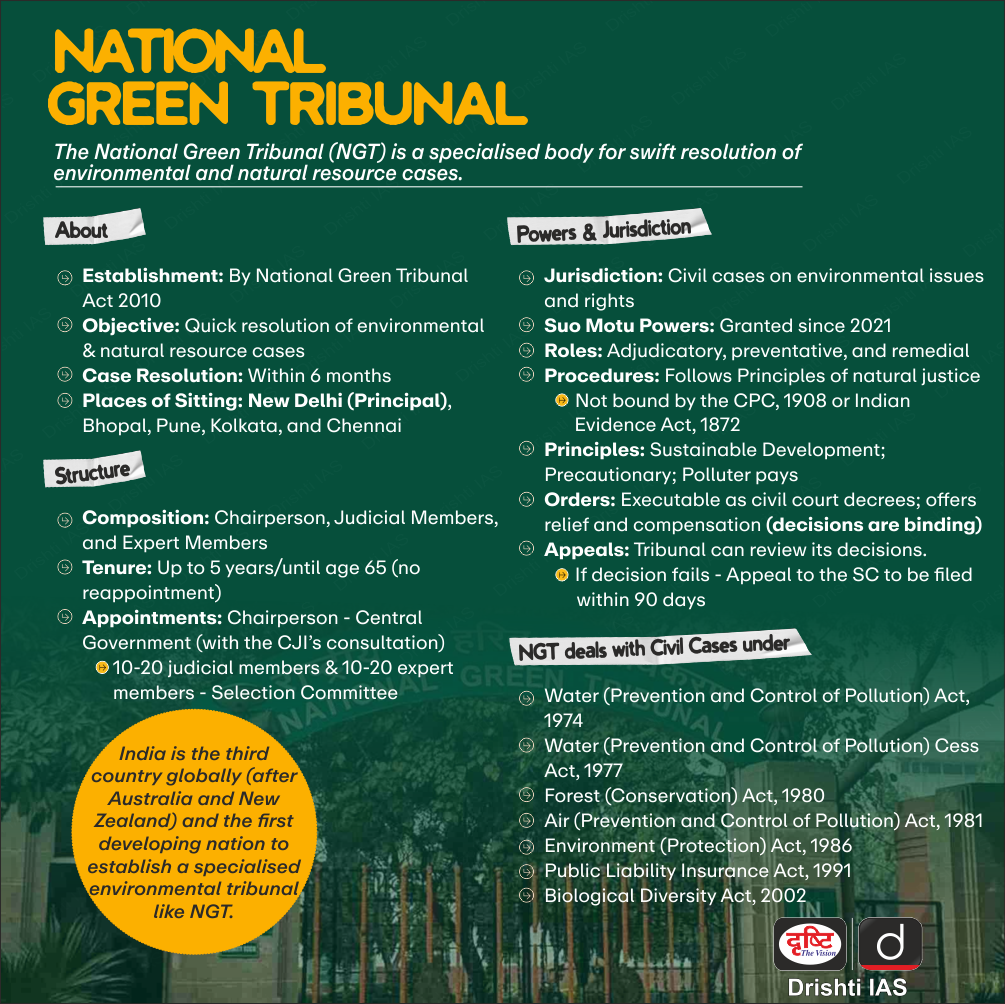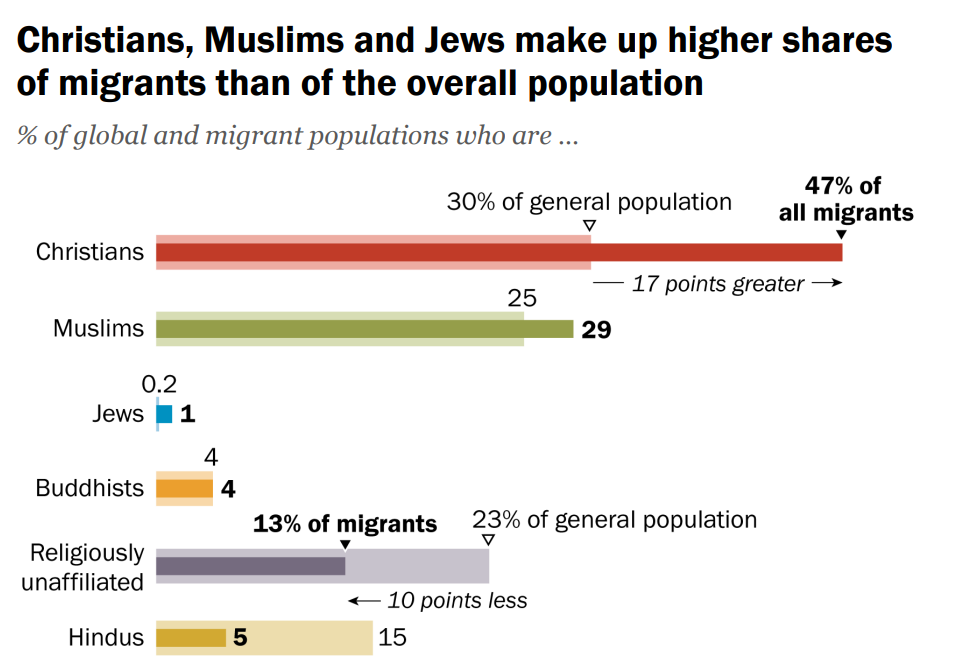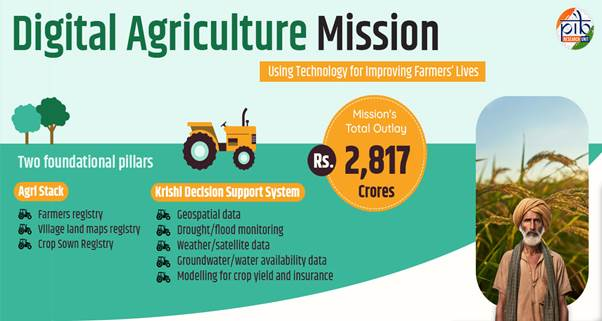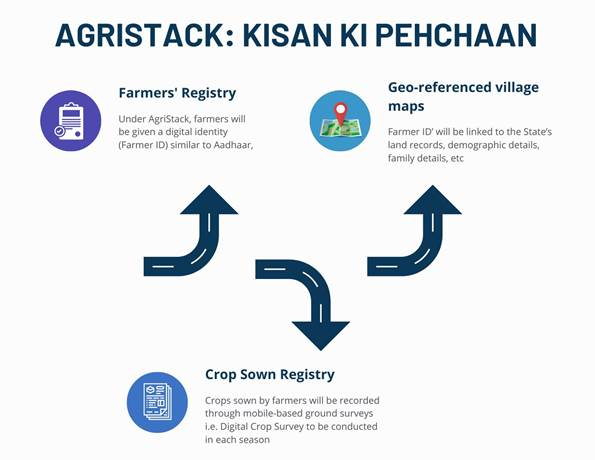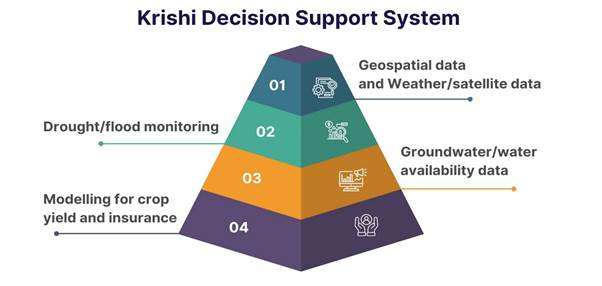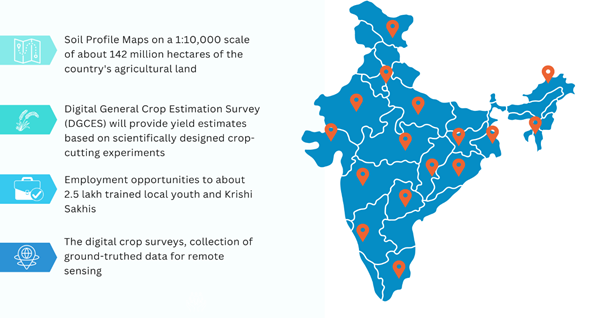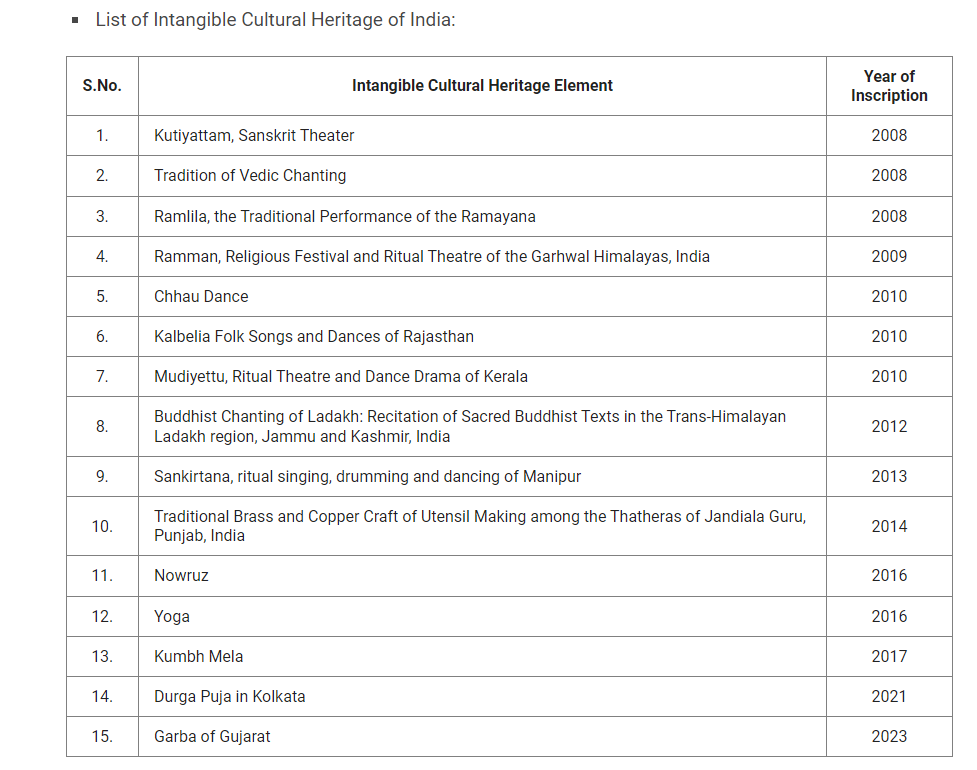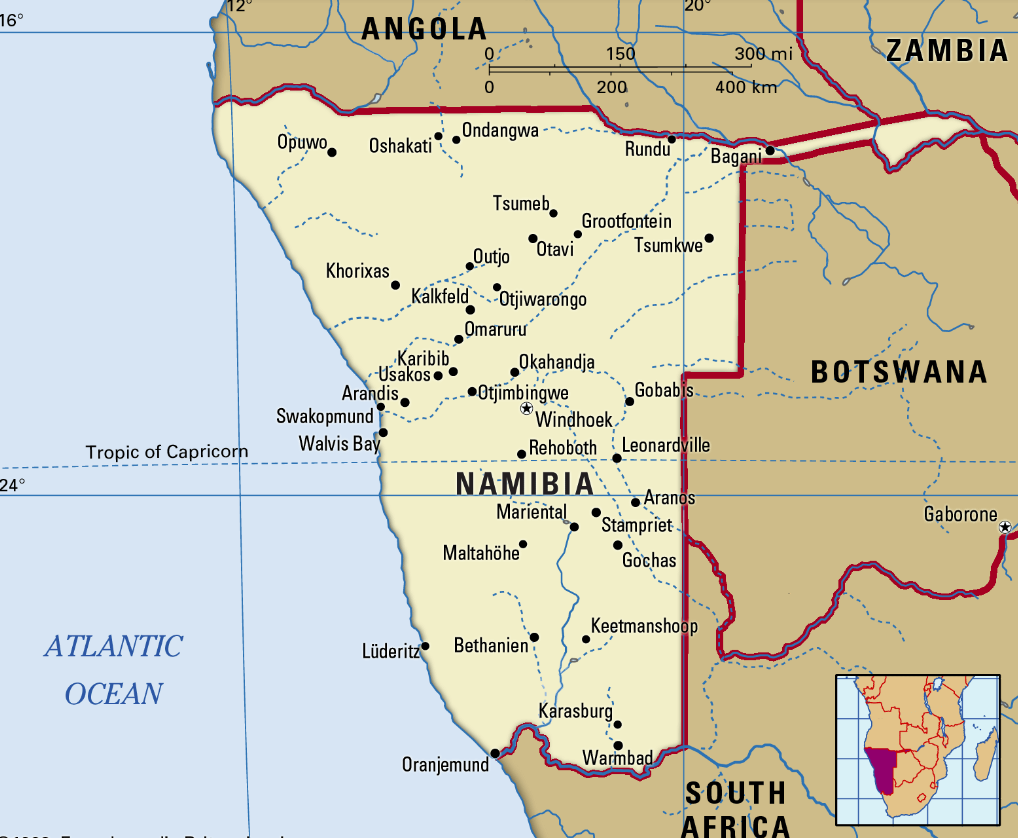Infographics
Society
The Religious Composition of the World’s Migrants Report
For Prelims: The Religious Composition of the World’s Migrants, Emigrants, Immigrants, Religious Minorities, Gulf Cooperation Council (GCC), Middle East-North Africa, British India, Remittances, Gross Domestic Product (GDP).
For Mains: Causes, Consequences and Significance of Migration in Globalised World.
Why in News?
Recently, the Pew Research Center published a report titled The Religious Composition of the World’s Migrants based on data from the United Nations and 270 censuses and surveys.
- More than 280 million people, or 3.6% of the world’s population, were living as international migrants in 2020.
- Religion plays a significant role in migration patterns, influencing both the departure from the homeland and the reception in the destination country.
What are the Key Findings of the Report?
- Trend among Hindu Migrants: In 2020, India emerged as the top country both for Hindu emigrants (out-migrants) and immigrants (in-migrants).
- 7.6 million Hindus born in India were living abroad.
- About 3 million Hindus born in other countries were residing in India.
- Trend among Christians: Christians represent the largest share of the global migrant population at 47%.
- Migration Trends among Religious Minorities in India: Indian emigrants are disproportionately from religious minorities.
- Christians constitute 16% of Indian emigrants but only 2% of India’s population.
- Muslims represent 33% of all Indian-born migrants but only 15% of India’s population.
- India is the second-largest source of Muslim migrants, with 6 million Muslims living majorly in UAE (1.8 million), Saudi Arabia (1.3 million), and Oman (720,000).
- Trend among GCC Countries: The migrant population in the Gulf Cooperation Council (GCC) countries has grown by 277% since 1990.
- The majority of GCC migrants are Muslims (75%), while Hindus and Christians account for 11% and 14%, respectively.
- GCC countries (Bahrain, Kuwait, Oman, Qatar, Saudi Arabia, UAE) host 9.9 million Indian migrants as of 2020.
- Trends in Global Migration: From 1990 to 2020, the number of international migrants increased by 83%, significantly outpacing the global population growth of 47%.
- Migrants travel an average distance of 2,200 miles.
- Religious Alignment and Migration Patterns: Migrants often relocate to countries where their religion aligns with that of the source country population.
- This trend may be driven by cultural and religious familiarity, influencing both the choice of destination and the integration process.
What is Hindu Migration Pattern and Trends?
- Global Underrepresentation: Hindu migrants make up a small share (5%) of all international migrants, with 13 million Hindus living outside their country of birth as of 2020.
- This is significantly lower than their proportion of the global population (15%).
- Distance Travelled: Hindu migrants tend to travel longer distances, averaging 3,100 miles from their country of origin, compared to the global average of 2,200 miles for all migrants.
- This is the longest average distance traveled among all religious groups who originate from Asia.
- Regions of Destination for Hindu Migrants: The Asia-Pacific region hosts the largest share of Hindu migrants (44%), followed by the Middle East-North Africa (24%), and North America (22%).
- Smaller proportions reside in Europe (8%), with very few in Latin America or sub-Saharan Africa.
- Regions of Origin for Hindu Migrants: The vast majority of Hindu migrants (95%) originate from the Asia-Pacific region, particularly India, which accounts for 57% of the world's Hindu migrants and is home to 94% of the global Hindu population.
- Other significant sources include Bangladesh (12% of Hindu migrants) and Nepal (11%).
- India as Destination for Hindu Migrants: India is the leading destination for Hindu migrants, hosting 22% (3 million) of all Hindu migrants.
- This is largely due to historical events, particularly the partition of British India in 1947 and their subsequent persecution in their new homelands like Pakistan and Bangladesh.
- Notable Country Pairs for Hindu Migration:
- India to the United States: The most common migration route for Hindus is from India to the US, with 1.8 million Hindus taking this path. These migrants often seek employment, higher education and income levels.
- Bangladesh to India: The second most common route involves migration from Bangladesh to India, with 1.6 million Hindus moving along this path, driven by historical, social, and economic factors.
How Diaspora Communities Boost Home-Country Growth?
- Substantial Financial Inflows: Diaspora communities significantly contribute to their home countries by sending remittances.
- In 2022, migrants from emerging and developing countries sent USD 430 billion, which is three times more than these countries receive in financial aid from other nations or international institutions.
- Impact on GDP: Remittances constitute a substantial portion of Gross Domestic Product (GDP) in several countries like 37% in Tajikistan, 30% in Nepal, and around 25% in Tonga, Liberia, and Haiti.
- Diaspora Investments: Diasporas often invest in home-country businesses and government bonds, increasing financial capital.
- Knowledge Transfer and Expertise: Diasporas transfer knowledge and expertise gained abroad back to their home countries.
- This can enhance productivity by improving education quality and developing better business and governance practices.
- Bridging Knowledge Gaps: Diaspora members use their skills, global contacts, and understanding of local customs to help home-country businesses navigate challenges, improve efficiency, and expand into new markets.
- For example, Indian executives in US technology companies have facilitated outsourcing to India.
Conclusion
Migration and diaspora communities boost home-country growth through remittances, investments, and knowledge transfer. To maximise these benefits, governments should create strong diaspora networks, reduce investment barriers, cut remittance costs, and support diaspora-driven initiatives. These strategies will enhance capital inflow, productivity, and sustainable development.
|
Drishti Mains Question: Discuss how migration and diaspora communities contribute to the economic growth and development of their home countries. |
UPSC Civil Services Examination, Previous Year Question (PYQ)
Mains
Q.‘Indian diaspora has a decisive role to play in the politics and economy of America and European Countries’. Comment with examples (2020)
Q.Indian Diaspora has an important role to play in South East Asian countries’ economy and society. Appraise the role of Indian Diaspora in South-East Asia in this context (2017)

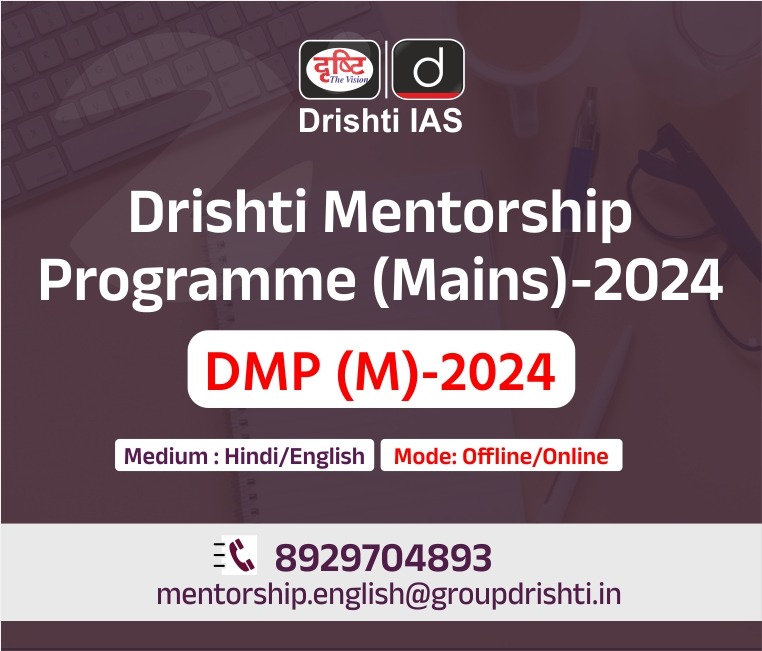
Agriculture
De-hyphenating Rice-Wheat Production
For Prelims: Rice, Wheat, Kharif, Rabi, Minimum Support Price (MSP), Official household expenditure survey data 2022-23, National Food Security Mission, Hybrid Rice Seed Production, Rashtriya Krishi Vikas Yojana, Climate-Smart Varieties.
For Mains: Changing Consumption Pattern, Need of Climate Resilient Agriculture
Why in News?
Recently, the policymakers called for de-hyphenating the production of rice and wheat due to changes in their production and consumption.
- In rice, there is a surplus production while wheat is suffering from a deficit in production and increased consumption.
What is the Need to De-hyphenate Rice and Wheat Production?
- Contrasting Surplus Situations:
- Rice Surplus: India exported 21.21 million tonnes (mt) of cereal grain (basmati plus non-basmati) in 2021-22, 22.35 mt in 2022-23, and 16.36 mt in 2023-24.
- Despite the record shipments, rice stocks in government godowns were at an all-time high at 45.48 mt in August 2024.
- Wheat Deficit: Wheat exports plunged from a peak of 7.24 mt in 2021-22 to 4.69 mt in 2022-23 and 0.19 mt in 2023-24.
- The government banned wheat exports in May 2022, yet wheat stocks were at a low of 26.81 mt in August 2024, one of the lowest in recent years.
- Rice Surplus: India exported 21.21 million tonnes (mt) of cereal grain (basmati plus non-basmati) in 2021-22, 22.35 mt in 2022-23, and 16.36 mt in 2023-24.
- Differences in Production Areas:
- Rice: Rice is grown both during the kharif (southwest monsoon) and rabi (winter-spring) seasons. In West Bengal, farmers grow three crops of rice called aus (summer), aman (rainy season) and boro (winter).
- Moreover, it is cultivated across a wide geography with 16 states contributing over 2 mt each. E.g., North (Punjab, UP) to South (Tamil Nadu, Telangana), Central (MP, Chhattisgarh), East (West Bengal, Assam), and West (Maharashtra, Gujarat).
- Wheat: Wheat has a single rabi cropping season and only eight states producing 2 mt-plus each mainly in the northern, central, and western regions.
- The top four states (UP, MP, Punjab, Haryana) account for 76% of output.
- Rice: Rice is grown both during the kharif (southwest monsoon) and rabi (winter-spring) seasons. In West Bengal, farmers grow three crops of rice called aus (summer), aman (rainy season) and boro (winter).
- Production Volatility: Wheat is more volatile due to its seasonal and geographical constraints, making it more susceptible to production fluctuations.
- Limiting Factor:
- Rice: Water availability is the main limiting factor which can be easily managed. E.g. States like Telangana have increased rice output significantly due to improved irrigation and minimum support price (MSP) assurances.
- Wheat: Wheat has become vulnerable to winters getting shorter, warmer and less predictable due to climate change adapting to which is long and difficult.
- Temperature increase in March (grain formation), and higher temperatures in November-December (sowing period) have reduced yields in recent years, leading to lower government stocks.
- Diverging Consumption Trends:
- Wheat: Official household expenditure survey data 2022-23 shows per capita monthly wheat consumption at 3.9 kg in rural and 3.6 kg in urban India, translating to roughly 65 mt for a population of 1,425 million.
- A significant portion of wheat is consumed in processed forms (maida, sooji/rava) for bakery items, convenience foods, and sweets, which is expected to rise with urbanisation and higher incomes.
- Today, most South Indians consume wheat daily in at least one meal, while rice has not become as popular in the North as wheat has in the South.
- Rice: No similar upward trend in rice consumption. Innovations in rice-based convenience foods are limited, suggesting stable consumption patterns.
- Wheat: Official household expenditure survey data 2022-23 shows per capita monthly wheat consumption at 3.9 kg in rural and 3.6 kg in urban India, translating to roughly 65 mt for a population of 1,425 million.
What are the Government Initiatives to Support Rice and Wheat Cultivation?
- National Food Security Mission
- Hybrid Rice Seed Production
- Rashtriya Krishi Vikas Yojana
- Minimum Support Price
- Agriculture Infrastructure Fund (AIF)
- Pradhan Mantri Krishi Sinchai Yojana (PMKSY)
- Crop Diversification Programme (CDP)
What are Key Facts about Rice and Wheat?
| Basis | Rice | Wheat |
| Temperature | Between 22-32°C with high humidity | Between 10-15°C (Sowing time) and 21-26°C (Ripening & Harvesting) with bright sunlight |
| Rainfall | Around 150-300 cm | Around 75-100 cm |
| Soil Type | Deep clayey and loamy soil | Well-drained fertile loamy and clayey |
| Top Producers | West Bengal >Uttar Pradesh >Punjab | Uttar Pradesh >Madhya Pradesh >Punjab |
| India’s Global Position | Second largest producer of rice in the world after China | Second largest producer of wheat in the world after China |
What are the Recommendations to Reduce Rice-Wheat Consumption Divergence?
- Wheat Policy: Rising consumption and geography/climate-imposed production challenges can make India an importer of wheat in the short term.
- For the long term, the government needs to focus on boosting per-acre yields and breeding climate-smart varieties.
- Rice Policy: Domestic consumption of rice is not keeping pace with production.
- The government should lift the ban on exports of white non-basmati rice.
- The 20% duty on parboiled non-basmati and the USD 950/tonne floor price on basmati shipments should be removed.
- Need for innovation in rice-based food processing to increase its consumption such as breakfast cereals, soup, baby food, packaged mixes, etc.
- De-hyphenation of Policy: The time has come to de-hyphenate rice-wheat, and not conflate one with the other. The two cereals are different in terms of issues faced, both current and for the future.
|
Drishti Mains Question: Q. There is a growing divergence between rice and wheat production and consumption in India. Do you agree? Substantiate your answer. |
UPSC Civil Services Examination, Previous Year Question (PYQ)
Prelims
Q. The economic cost of food grains to the Food Corporation of India is Minimum Support Price and bonus (if any) paid to the farmers plus (2019)
(a) transportation cost only
(b) interest cost only
(c) procurement incidentals and distribution cost
(d) procurement incidentals and charges for godowns
Ans: (c)
Q. With reference to the provisions made under the National Food Security Act, 2013, consider the following statements: (2018)
- The families coming under the category of ‘below poverty line (BPL)’ only are eligible to receive subsidised food grains.
- The eldest woman in a household, of age 18 years or above, shall be the head of the household for the purpose of issuance of a ration card.
- Pregnant women and lactating mothers are entitled to a ‘take-home ration’ of 1600 calories per day during pregnancy and for six months thereafter.
Which of the statements given above is/are correct?
(a) 1 and 2 only
(b) 2 only
(c) 1 and 3 only
(d) 3 only
Ans: (b)
Mains
Q. How has the emphasis on certain crops brought about changes in cropping patterns in the recent past? Elaborate the emphasis on millets production and consumption. (2018)
Q. What are the major reasons for declining rice and wheat yield in the cropping system? How crop diversification is helpful to stabilize the yield of the crops in the system? (2017)


Indian Economy
DICGC Overcharging Commercial Banks
For Prelims: Deposit Insurance, Limit and Coverage of Deposit Insurance, DICGC
For Mains: Importance of Deposit Insurance and the need of the Deposit Insurance and Credit Guarantee Corporation (DICGC)
Why in News?
The Deposit Insurance and Credit Guarantee Corporation (DICGC), a subsidiary of the Reserve Bank of India (RBI) is under scrutiny for its premium structure, which appears to overcharge commercial banks while disproportionately benefiting cooperative banks.
- This raises concerns about the fairness and efficiency of the current system, prompting calls for a reevaluation of premiums based on the risk profiles of different banking institutions.
How are the Commercial Banks Being Overcharged for Deposit Insurance?
- Disproportionate Premium Burden: DICGC collects 94% of premiums from commercial banks, which account for 1.3% of net claims, while cooperative banks contribute 6% of premiums and claim 98.7% of net claims.
- Since 1962, commercial banks have filed gross claims of Rs 295.85 crore, with net claims totaling Rs 138.31 crore.
- In contrast, cooperative banks have filed gross claims of Rs 14,735.25 crore, with net claims amounting to Rs 10,133 crore.
- This means that well-managed commercial banks are effectively subsidising the higher risks associated with cooperative banks, which require a significant portion of claims.
- Since 1962, commercial banks have filed gross claims of Rs 295.85 crore, with net claims totaling Rs 138.31 crore.
- Implications for Overcharging Commercial Banks:
- High Compliance Costs: The uniform premium rate of 12 paise per Rs 100 insured, regardless of risk profile, imposes high compliance costs on commercial banks which can affect their operational efficiency and profitability, ultimately impacting their ability to lend and serve customers effectively.
- Inequitable Risk Assessment: Commercial banks, which generally have lower risk profiles, are penalised through higher premiums, undermining the principles of risk evaluation that should guide insurance pricing.
- Impact on Financial Stability: The high premiums can lead to reduced financial stability for commercial banks, as they may need to pass on these costs to depositors and borrowers.
- This could result in higher interest rates for loans and lower returns for depositors, affecting the overall banking ecosystem.
- Encouragement of Poor Management Practices: By requiring commercial banks to bear the costs associated with cooperative bank failures, the current structure may inadvertently encourage poor management practices within cooperative banks, as the consequences of defaults are shifted to more stable institutions.
What are the Key Facts About DICGC?
- About:
- It came into existence in 1978 after the merger of Deposit Insurance Corporation (DIC) and Credit Guarantee Corporation of India Ltd. (CGCI) after passing of the Deposit Insurance and Credit Guarantee Corporation Act, 1961 by the Parliament.
- It serves as a deposit insurance and credit guarantee for banks in India.
- It is a fully owned subsidiary of and is governed by the Reserve Bank of India (RBI).
- Funds Managed by DICGC:
- Deposit Insurance Fund: Provides insurance to bank depositors in case the bank fails financially and has no money to pay its depositors and has to go in for liquidation.
- It is funded by premiums from banks.
- Credit Guarantee Fund: It is the guarantee that often provides for a specific remedy to the creditor if his debtor does not return his debt.
- General Fund: It covers DICGC's operational expenses, funded by surplus from its operations.
- Deposit Insurance Fund: Provides insurance to bank depositors in case the bank fails financially and has no money to pay its depositors and has to go in for liquidation.
What is the Deposit Insurance Scheme of DICGC?
- Limit for Deposit Insurance: Currently, a depositor has a claim to a maximum of Rs 5 lakh per account as insurance cover. This amount is termed ‘deposit insurance’. The cover of Rs 5 lakh per depositor is provided by the DICGC.
- Depositors having more than Rs 5 lakh in their account have no legal recourse to recover funds in case a bank collapses.
- Premium for the insurance has been raised from 10 paise for every Rs 100 deposit, to 12 paise and a limit of 15 paise has been imposed.
- The premium for this insurance is paid by banks to the DICGC, and not be passed on to depositors.
- The Insured banks pay advance insurance premiums to the corporation semi-annually within 2 months from the beginning of each financial half year, based on their deposits as at the end of previous half year.
- Coverage:
- Banks, including regional rural banks, local area banks, foreign banks with branches in India, and cooperative banks, are mandated to take deposit insurance cover with the DICGC.
- Primary cooperative societies are not insured by the DICGC.
- Banks, including regional rural banks, local area banks, foreign banks with branches in India, and cooperative banks, are mandated to take deposit insurance cover with the DICGC.
- Types of Deposits Covered: DICGC insures all bank deposits, such as saving, fixed, current, recurring, etc. except the following types of deposits.
- Deposits of foreign Governments.
- Deposits of Central/State Governments.
- Inter-bank deposits.
- Deposits of the State Land Development Banks with the State co-operative banks.
- Any amount due on account of any deposit received outside India.
- Any amount which has been specifically exempted by the corporation with the previous approval of the RBI.
- Need of Deposit Insurance:
- Troubles for depositors in getting immediate access to their funds in banks in recent cases such as Punjab & Maharashtra Co-operative (PMC) Bank, Yes Bank and Lakshmi Vilas Bank had put spotlight on the subject of deposit insurance.
Why is there Need to Reevaluate Deposit Insurance Premiums by DICGC?
- Proposal: There has been a proposal to reduce the premium for commercial banks from 12 paise to 3 paise per Rs 100 insured, which could relieve these banks of approximately Rs 20,000 crore in FY26.
- Conversely, premiums for cooperative banks could remain at 12 paise or increase to 15 paise.
- Benefits:
- Risk-Based Premiums: Aligning premiums with the risk profiles of banks sends a clear message that insurance costs should reflect actual risk.
- Economic Efficiency: Lower compliance costs for commercial banks can enhance their operational efficiency, benefiting depositors and borrowers.
- Encouraging Good Management: By not penalising well-managed banks, the system promotes better banking practices.
|
Drishti Mains Question: Discuss the significance of deposit insurance in the banking sector and the challenges faced by the DICGC in India. |
UPSC Civil Services Examination Previous Year Question (PYQ)
Prelims
Q. Which of the following grants/grant direct credit assistance to rural households? (2013)
- Regional Rural Banks
- National Bank for Agriculture and Rural Development
- Land Development Banks
Select the correct answer using the codes given below:
(a) 1 and 2 only
(b) 2 only
(c) 1 and 3 only
(d) 1, 2 and 3
Ans: (c)
Q. If the RBI decides to adopt an expansionist monetary policy, which of the following would it not do? (2020)
- Cut and optimize the Statutory Liquidity Ratio
- Increase the Marginal Standing Facility Rate
- Cut the Bank Rate and Repo Rate
Select the correct answer using the code given below:
(a) 1 and 2 only
(b) 2 only
(c) 1 and 3 only
(d) 1, 2 and 3
Ans: (b)
Mains
Q. Pradhan Mantri Jan Dhan Yojana (PMJDY) is necessary for bringing unbanked to the institutional finance fold. Do you agree with this for the financial inclusion of the poorer section of the Indian society? Give arguments to justify your opinion. (2016)
Agriculture
7 New Schemes to Boost Farmer Income
For Prelims: Agriculture and allied sectors, livestock and horticulture, the Digital Agriculture Mission (DAM), Agri Stack, Krishi Decision Support System, Indian Council of Agricultural Research (ICAR), the New Education Policy 2020, Krishi Vigyan Kendras
For Mains: Role of technology in Indian agriculture sector.
Why in News?
Recently, the Union Cabinet announced seven new schemes with a total outlay of nearly Rs 14,000 crore for the agriculture and allied sectors.
- The schemes are centered on advancing research and education, enhancing climate resilience, optimising natural resource management, promoting digitization within the agriculture sector, and development of livestock and horticulture.
- The overarching objective of these initiatives is to equip farmers with the necessary capabilities for adopting climate-resilient agricultural practices.
What are the Key Schemes?
- The Digital Agriculture Mission (DAM): The Digital Agriculture Mission has two foundation pillars which are Agri Stack and Krishi Decision Support System.
- Agri Stack: It is a collection of technologies and digital databases that focuses on farmers and the agricultural sector.
- AgriStack will create a unified platform for farmers to provide them end to end services across the agriculture food value chain.
- Under the programme, each farmer will have a unique digital identification (farmers’ ID) that contains personal details, information about the land they farm, as well as production and financial details.
- Each ID will be linked to the individual's digital national ID Aadhaar.
- Agri Stack: It is a collection of technologies and digital databases that focuses on farmers and the agricultural sector.
- Krishi Decision Support System: It aims to integrate and store in a standardised form relevant geospatial and non-geospatial data, such as remote-sensing data, weather data, soil data, crop signature library, reservoir data, groundwater data, and data pertaining to Government schemes.
- Soil Profile Mapping:
- Under this, detailed soil profile maps on a 1:10,000 scale for approximately 142 million hectares of agricultural land have been envisaged, with 29 million hectares of soil profile inventory already being mapped.
- The Crop Science for Food and Nutritional Security programmes: These are anchored on six key pillars, advancing research and education, managing plant genetic resources, genetic enhancement of food and fodder crops, improvement of pulse and oilseed crops, research on entomology, microbiology, and pollination, as well as the advancement of commercial crop varieties.
- Strengthening Agricultural Education, Management and Social Sciences: It aimed at bolstering agricultural education, management, and social sciences under the aegis of the Indian Council of Agricultural Research (ICAR).
- This initiative seeks to modernise agricultural research and education in alignment with the New Education Policy 2020.
- The programme will emphasise on cutting-edge technologies such as Digital DPI, AI, big data, and remote sensing. Additionally, it will encompass components focused on natural farming and climate resilience.
- Sustainable livestock health and production: This scheme was dedicated to enhancing sustainable livestock health and production, with the objective of augmenting farmers' income from livestock and dairy sectors.
- This scheme will prioritise areas such as animal health management, veterinary education, advancements in dairy production and technology, animal genetic resource management and improvement, as well as animal nutrition and the development of small ruminants.
- Sustainable development of Horticulture: The Cabinet has also approved a significant scheme focused on the sustainable development of horticulture.
- This initiative aims to enhance farmers' income through the cultivation of horticultural crops.
- The programme encompasses a wide range of crops, including tropical, subtropical, and temperate horticultural varieties; root, tuber, bulbous, and arid crops; as well as vegetables, floriculture, mushroom crops, plantation crops, spices, medicinal, and aromatic plants.
- Krishi Vigyan Kendras (KVKs): Krishi Vigyan Kendras aim to bolster agricultural extension services and sustainable resource management practices nationwide.
- KVK aims to evaluate location specific technology modules in agriculture and allied enterprises through technology assessment, refinement and demonstration.
- Natural Resource Management (NRM): NRM scheme was also approved by the cabinet.
- It is the sustainable use of natural resources to meet current needs while ensuring future generations can meet their own needs.
What is the Role of Technology in the Agricultural Sector of India?
- Crop Preparation Stage:
- Soil Health Monitoring: Advanced soil sensors and remote sensing technologies enable precise monitoring of soil health and nutrient levels. This allows for targeted application of fertilizers and soil amendments, enhancing soil fertility and sustainable agricultural practices.
- Agricultural Machinery: Mechanisation has been a critical driver of productivity in the agrarian sector. The adoption of modern agricultural machinery has significantly increased operational efficiency and reduced labour costs, contributing to higher agricultural output.
- Biotechnology: It has facilitated the development of genetically modified crops that are resistant to pests and diseases, drought-tolerant, and yield-enhanced. These innovations have led to increased agricultural productivity, reduced crop losses, and improved crop quality.
- Cultivation Stage:
- Role of Drones: Drones, or Unmanned Aerial Vehicles (UAVs), have emerged as transformative tools in agriculture. They are extensively used for aerial seeding, precision pesticide spraying, and remote data collection, facilitating research and enhancing farm management practices.
- Role of Agri-Tech Startups: Agri-tech startups play a pivotal role in driving agrarian change by introducing innovative technologies and modern agricultural practices.
- They contribute to advancements in farming techniques, improve efficiency, and enhance access to finance, thus revolutionizing the agriculture sector.
- Climate Adaptation Technologies: Innovations such as climate-resilient crop varieties and weather prediction tools help farmers adapt to changing climatic conditions.
- These technologies support the development of strategies for mitigating climate-related risks and ensuring crop survival.
- Renewable Energy Integration: The adoption of renewable energy technologies, such as solar-powered irrigation systems and biogas production, supports sustainable agricultural practices. T
- hese innovations reduce dependence on fossil fuels and lower energy costs for farmers.
- Harvesting Stage and Food Processing:
- Supply Chain Optimization: Technology-driven solutions, such as blockchain and IoT (Internet of Things), enhance the transparency and efficiency of agricultural supply chains. These technologies improve traceability, reduce transaction costs, and ensure timely delivery of products.
- Precision Livestock Farming: Technologies such as wearable sensors and monitoring systems for livestock provide real-time data on animal health, behavior, and productivity. This allows for improved management of livestock and enhanced animal welfare.
- Food Processing and Preservation: Technological advancements in food processing and preservation have ensured that food remains safe and has an extended shelf life.
- These techniques have minimised food wastage and improved the efficiency of food storage and transportation, enhancing overall food security.
- Market Access: Technology has revolutionized market access for farmers, enabling them to reach both local and international markets.
- The rise of the internet and e-commerce platforms has empowered farmers to connect directly with buyers, bypassing intermediaries and increasing profitability.
- Digital Platforms for Knowledge Sharing: Digital platforms and online forums facilitate the dissemination of agricultural knowledge and best practices.
- Farmers can access expert advice, educational resources, and peer support, leading to better-informed agricultural decisions.
What are the Key Initiatives Related to Agriculture?
- Pradhan Mantri Fasal Bima Yojana (PMFBY)
- Soil Health Card Scheme
- Pradhan Mantri Krishi Sinchai Yojana (PMKSY)
- e-National Agriculture Market (e-NAM)
- Paramparagat Krishi Vikas Yojana (PKVY)
- Digital Agriculture Mission
- Unified Farmer Service Platform (UFSP)
- National e-Governance Plan in Agriculture (NeGP-A)
- Mission Organic Value Chain Development for North Eastern Region (MOVCDNER)
Conclusion
While agri-tech holds substantial promise for transforming India's agricultural landscape through enhanced productivity, efficiency, and sustainability, its successful implementation is contingent upon overcoming several critical challenges. Additionally, integrating agri-tech with traditional practices, addressing regulatory and policy gaps, and considering environmental and social impacts are essential for fostering an inclusive and sustainable agrarian transformation.
|
Drishti Mains Question: Discuss the role of agri-tech in transforming India's agriculture sector. Highlight the key challenges associated with its implementation and suggest measures to address these issues? |
UPSC Civil Services Examination, Previous Year Question (PYQ)
Prelims
Q. In India, which of the following can be considered as public investment in agriculture? (2020)
- Fixing Minimum Support Price for agricultural produce of all crops
- Computerization of Primary Agricultural Credit Societies
- Social Capital development
- Free electricity supply to farmers
- Waiver of agricultural loans by the banking system
- Setting up of cold storage facilities by the governments
Select the correct answer using the code given below:
(a) 1, 2 and 5 only
(b) 1, 3, 4 and 5 only
(c) 2, 3 and 6 only
(d) 1, 2, 3, 4, 5 and 6
Ans: (c)
Mains
Q. How can the ‘Digital India’ programme help farmers to improve farm productivity and income? What steps has the Government taken in this regard? (2022)
Q. What are the present challenges before crop diversification? How do emerging technologies provide an opportunity for crop diversification? (2021)


Important Facts For Prelims
Hallmarking of 9KT Gold
Why in News?
India is set to implement mandatory hallmarking for 9-karat (KT) gold jewellery, a move prompted by rising consumer preferences for affordable gold. This new regulation aims to ensure quality and protect consumers amid a booming gold market.
Why is 9KT Gold Hallmarking Being Made Mandatory?
- Rising Consumer Preferences: The growing preference for more affordable gold jewellery has led to a surge in demand for 9KT gold, which is less expensive compared to higher purity gold.
- The purity of gold is measured in karats, with the purest gold having 24 karats, indicating no other metal is mixed with it.
- As the karat count decreases, it signifies the presence of other metals, typically copper and silver, mixed with the gold. For instance, 18 karat gold contains 75% gold and 25% other metals.
- Increasing Chain-Snatching Incidents: A rise in chain-snatching cases has heightened the need for regulated and certified gold products. The National Crime Records Bureau (NCRB) reported a 32.54% increase in such crimes in 2022.
- Hallmarks provide a unique identifier for each piece of jewellery, making it easier to trace stolen items. This can deter thieves who know that marked items are more easily tracked.
Note: India is the world's second-biggest gold consumer after China, with demand expected to touch 750 tonnes during the calendar year 2024, as per the World Gold Council.
- In 2022, India exported USD 9.22 billion worth of gold jewellery, accounting for 8.1% of the world’s total gold jewellery exports. The country stood fourth in terms of gold jewellery exports.
What is Hallmarking?
- About: Hallmarking is the official recording of the precious metal content in articles, used as a guarantee of purity.
- The objectives are to protect the public and obligate manufacturers to maintain legal standards. In India, gold and silver are currently under the Hallmarking Scheme.
- The hallmark will be valid for the entire life-time of the hallmarked jewellery.
- Working Procedure: The Bureau of Indian Standards (BIS) under the BIS Hallmarking Scheme has mandated that all hallmarked gold jewellery and artefacts must carry a 6-digit alphanumeric Hallmark Unique Identification (HUID) number.
- This HUID aims to improve consumer confidence and ensure better traceability of gold products.
- As per this scheme, registration is granted to the jewellers by BIS. The BIS certified jewellers can get their jewellery hallmarked from any of the BIS recognized Assaying and Hallmarking Centres.
- Each hallmarked gold jewellery item is assigned a unique HUID number.
- Consumers can verify the authenticity of gold jewellery by entering the HUID number into the BIS CARE app, which provides details about Jeweller, Purity and Hallmarking Centre.
- Importance: If a hallmarked item is found to be of lower purity than stated, buyers are entitled to compensation under BIS Rules 2018.
- Hallmarking provides traceability and ensures consumers are protected from fraud and counterfeit goods.
Note: The purity of diamonds is typically referred to as clarity, which measures the presence of internal or external imperfections, known as inclusions and blemishes, respectively.
- To determine the clarity, experts examine the diamond using a high-magnification microscope and eye visibility with a power lens, grading it on a scale from Flawless to Imperfect based on internal inclusions and external blemishes.
- A carat is a unit of weight used to measure the weight of a gemstone such as a diamond. While karat measures the purity of a gold alloy in relation to 24 parts of gold.
UPSC Civil Services Examination, Previous Year Question (PYQ)
Prelims
Q. What is/are the purpose/purposes of Government’s ‘Sovereign Gold Bond Scheme’ and ‘Gold Monetization Scheme’? (2016)
- To bring the idle gold lying with Indian households into the economy.
- To promote FDI in the gold and jewellery sector.
- To reduce India’s dependence on gold imports.
Select the correct answer using the code given below:
(a) 1 only
(b) 2 and 3 only
(c) 1 and 3 only
(d) 1, 2 and 3
Ans: (c)
Exp:
- Sovereign Gold Bond Scheme and Gold Monetization Scheme were launched by the Government in 2015. The main objectives of these schemes are: To mobilize the gold held by households and institutions in the country. Hence, 1 is correct.
- To provide a fillip to the gems and jewellery sector in the country by making gold available as raw material on loan from the banks. To be able to reduce reliance on import of gold over time to meet the domestic demand. Hence, 3 is correct.
- To promote FDI in gold and jewellery sector is not the objective of these schemes. Hence, 2 is not correct. Therefore, option (c) is the correct answer.


Important Facts For Prelims
Surety Shouldn't Dictate Bail: SC
Why in News?
Recently, the Supreme Court of India (SC) addressed the complexities of bail in a case where an accused, granted bail in 13 criminal cases, faced difficulties in securing sufficient sureties.
- The court recognised the challenges in securing sureties, often relying on close relatives or friends.
- The court emphasised balancing the accused's fundamental rights under Article 21 with ensuring his presence in court. Article 21 protects the right to life and personal liberty, applicable to both citizens and non-citizens.
What is Bail, Parole and Furlough?
- Bail: Bail is the conditional/provisional release of a person held under legal custody, by undertaking a promise to appear in the Court as and when required.
- It signifies a security/collateral deposited before the Court for release.
- In Supt. and Remembrancer of Legal Affairs v. Amiya Kumar Roy Choudhry (1973) case, the Calcutta High Court explained the principle behind giving Bail.
- Types of Bail:
- Regular Bail: It is a direction given by the Court to release a person who is already under arrest and kept in police custody.
- For such Bail, a person can file an application under Section 437 and 439 of the CrPC (now Bharatiya Nagarik Suraksha Sanhita (BNSS)).
- Interim Bail: Bail granted for a temporary and short period by the Court till the application seeking Anticipatory Bail or Regular Bail is pending before a Court.
- Anticipatory Bail or Pre-arrest Bail: It is a legal provision that allows an accused person to apply for bail before being arrested.
- It is granted under Section 438 of the CrPC (now BNSS). It is issued only by the Sessions Court and High Court.
- Regular Bail: It is a direction given by the Court to release a person who is already under arrest and kept in police custody.
- Parole: It is a system of releasing a prisoner with suspension of the sentence. The release is conditional, usually subject to behaviour, and requires periodic reporting to the authorities for a set period of time.
- Parole is not a right, and is given to a prisoner for a specific reason, such as a death in the family or a wedding of a blood relative.
- It may be denied to a prisoner even when he makes out a sufficient case, if the competent authority is satisfied that releasing the convict would not be in the interest of society.
- Furlough: It is given in cases of long-term imprisonment. The period of furlough granted to a prisoner is treated as remission of his sentence.
- Unlike parole, furlough is seen as a matter of right for a prisoner, to be granted periodically irrespective of any reason, and merely to enable the prisoner to retain family and social ties, and to counter the ill-effects of prolonged time spent in prison.
- Both parole and furlough are considered as reformative processes. These provisions were introduced with a view to humanising the prison system. Parole and furlough are covered under the Prisons Act of 1894.
UPSC Civil Services Examination, Previous Year Question (PYQ)
Q. With reference to India, consider the following statements: (2021)
- When a prisoner makes out a sufficient case, parole cannot be denied to such prisoner because it becomes a matter of his/her right.
- State Governments have their own Prisoners Release on Parole Rules.
Which of the statements given above is/are correct?
(a) 1 only
(b) 2 only
(c) Both 1 and 2
(d) Neither I nor 2
Ans: (b)


Rapid Fire
Safe Harbour Provision for Social Media
Recently, French police arrested (later released on conditional bail) Telegram CEO Pavel Durov near Paris, marking a significant shift in tech accountability.
- This action highlights growing scrutiny over tech executives regarding their platforms' role in illicit activities.
- Charges Against Durov: Telegram is alleged to have enabled the distribution of content related to drug trafficking, child pornography, violent propaganda, and organised crime.
- Authorities accused Telegram of not cooperating with law enforcement efforts to moderate and control objectionable content on Telegram.
- Safe Harbour Rules: Social media platforms are not held legally liable for user-generated content, as long as they act to remove or address flagged objectionable content, thus supporting free speech and ensuring platforms are not responsible for preemptive content control.
- United States: Safe harbour protection is provided under Section 230 of the Communications Decency Act, which shields platforms from being held liable for user content.
- India: Section 79 of the Information Technology Act, 2000 offers similar protection.
- The Information Technology Rules, 2021, require social media companies with over 5 million users to appoint a chief compliance officer, who can be held criminally liable for non-compliance with takedown requests or other regulations.
Read More: Information Technology Act’s Section 69A, Digital Personal Data Protection Bill 2022, New IT Rules 2021


Rapid Fire
Navratna Status to Four CPSEs
Recently, the government upgraded four Central Public Sector Enterprises (CPSEs)—Railtel Corporation of India, Solar Energy Corporation of India, SJVN (Satluj Jal Vidyut Nigam Limited), and NHPC (National Hydroelectric Power Corporation) —to 'Navratna' status. This increases the total number of Navratna CPSEs in India to 25.
- Objective: Launched in 1997, the Navratna scheme aims to identify CPSEs with comparative advantages and help them become global leaders.
- Navratna status is awarded to government-owned enterprises previously classified as 'Miniratna' category I, recognising their exceptional financial and market performance.
- The Department of Public Enterprises (DPE) in the Ministry of Finance is responsible for granting Navratna status to companies.
- Benefits of Navratna Status: It gets enhanced financial and operational freedom and empowers it to invest up to Rs 1,000 crore or 15% of its net worth on a single project without seeking government approval.
- They will also have the freedom to enter joint ventures, form alliances and float subsidiaries abroad.
Read More: Sectors of the Indian Economy


Rapid Fire
Cyclone Asna
- Recently, the India Meteorological Department (IMD) reported that Cyclone Asna has formed over the Kutch coast in Gujarat and adjoining areas of Pakistan.
- Since 1891, only three cyclonic storms have occurred in the Arabian Sea in August, with the most recent one before 2023 being in 1976.
- A well-marked low-pressure area – a very early precursor to a cyclone – has formed in the Bay of Bengal off north Andhra Pradesh and south Odisha.
- Cyclone Asna caused torrential rain in Gujarat, leading to 26 deaths, the relocation of 18,000 people, and the rescue of 1,200 from floods.
- Formation: Cyclones form over warm ocean waters where moist air rises, creating a low-pressure system. This system intensifies due to the Coriolis effect, forming a rotating storm with strong winds.
- Cyclone Asna, named by Pakistan, means “the one to be acknowledged or praised.”
- Naming of Cyclones: Names are chosen from a list of suggestions submitted by member countries. The names are often easy to pronounce, culturally relevant, and avoid being offensive.
Read More: Weather Monitoring by IMD, World Meteorological Day, Ocean currents


Rapid Fire
Paris Zinc Roofers
Recently, the French Culture Ministry nominated the zinc roofing profession in Paris for UNESCO’s Intangible Cultural Heritage (ICH) list, highlighting the craftsmanship.
- Zinc roofs have been integral to Paris's skyline for nearly 200 years, with 21.4 million square metres of zinc-covered roofs.
- While zinc roofs contribute to Paris's iconic look, they face criticism for overheating buildings due to poor insulation; zinc roofs exacerbate heat absorption, leading to higher indoor temperatures.
- The UNESCO ICH list includes knowledge and skills that are passed down through generations, such as: Oral traditions, Performing arts, Social practices, Rituals, Festive events, Traditional crafts, and Contemporary rural and urban practices.
- India has a total of 15 elements inscribed on the UNESCO ICH list.
Read more: Intangible Cultural Heritage (ICH) of India


Rapid Fire
Namibia Plans to Butcher Wild Animals for Meat
The Namibia government is planning to cull 723 wild animals, including 83 elephants, to feed the country amid a severe drought and hunger crisis. The move aims to provide food and reduce human-wildlife conflicts due to scarce resources.
- The plan is necessary and aligns with the constitutional mandate to utilize natural resources for the benefit of Namibian citizens.
- The nation is also working to mitigate increasing human-wildlife interactions, which are expected to intensify during the drought as both seek access to water and vegetation.
- Namibia:
- Namibia is a Southern African nation with its western boundary formed by the Atlantic Ocean. It shares its northern borders with Angola and Zambia, while Botswana lies to its east and South Africa borders both its eastern and southern regions
- Namibia, acknowledged as the driest nation in sub-Saharan Africa. It ranks among the least densely populated countries globally.
- In 1884, the German Empire established colonial rule over much of the region, naming it German South West Africa.
- The Namib, the Kalahari, the Succulent Karoo, and the Nama Karoo deserts are located in Namibia.
- Zambezi, Okavango and Kunene are important rivers in Namibia.
Read More: Human-wildlife conflicts

